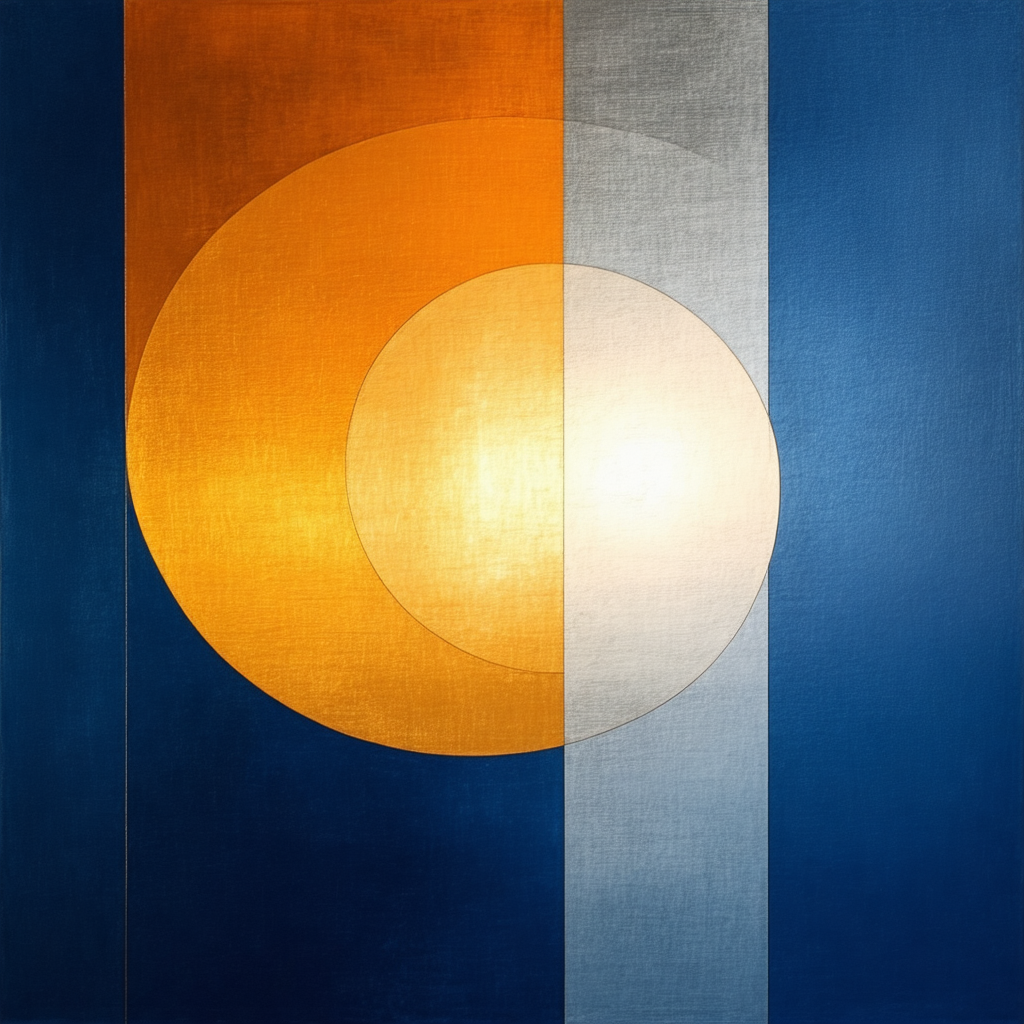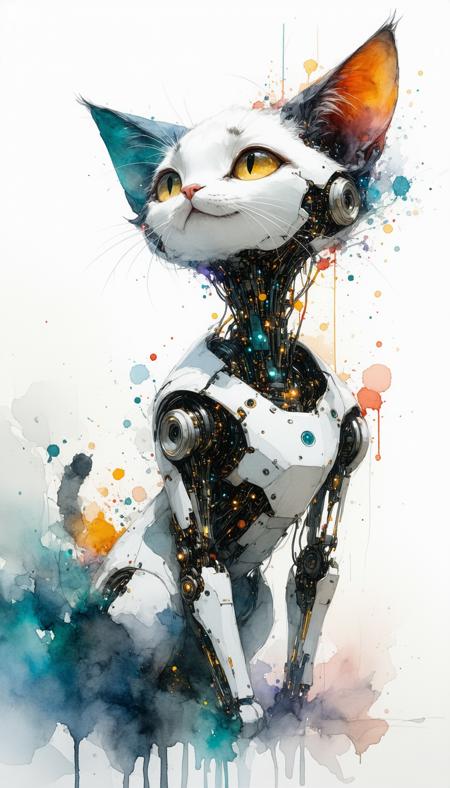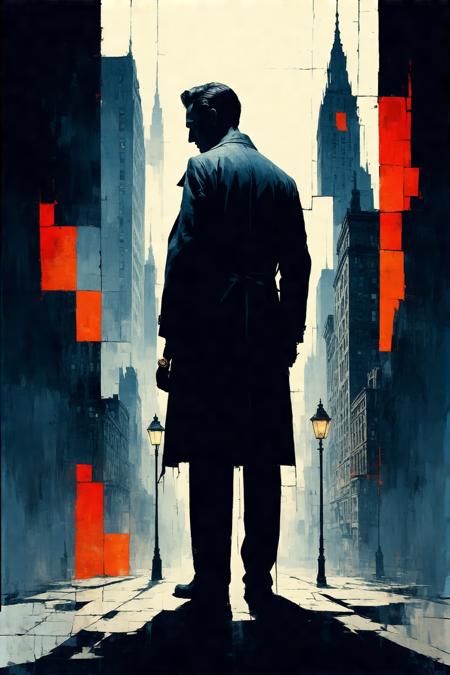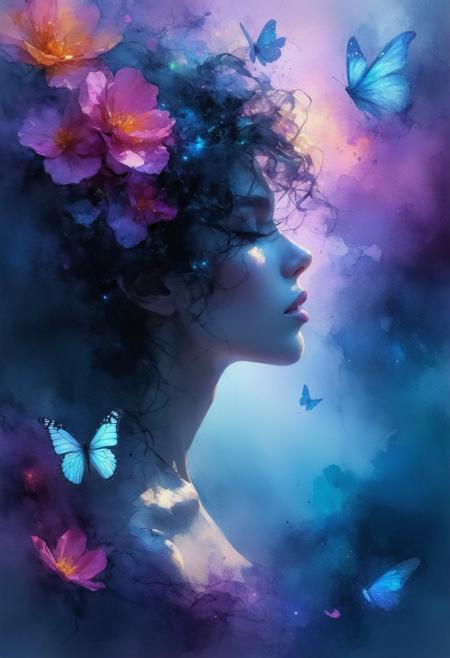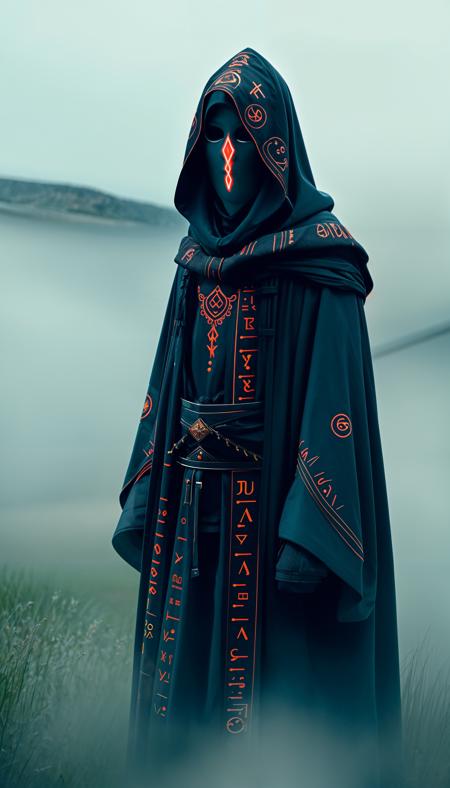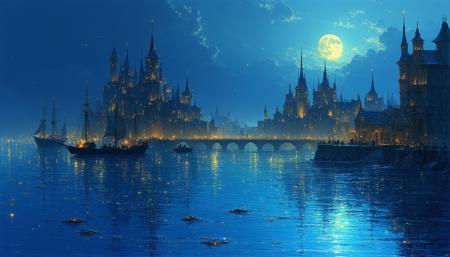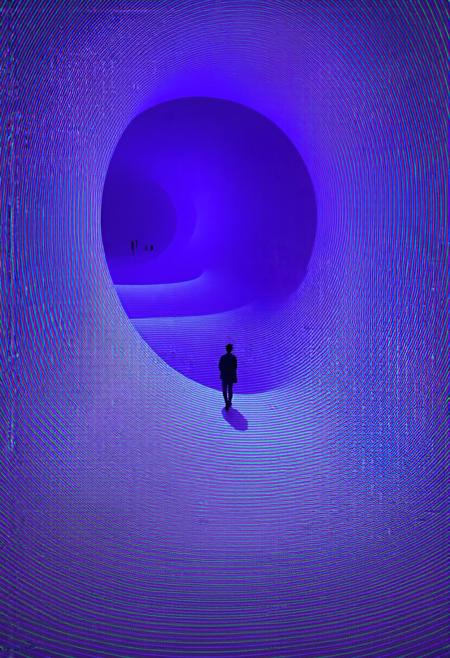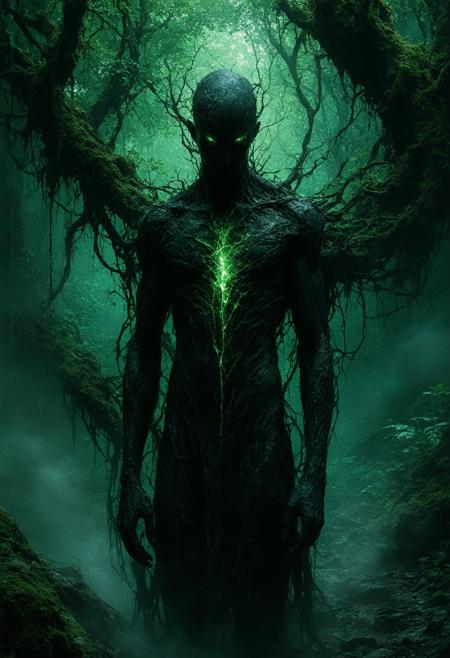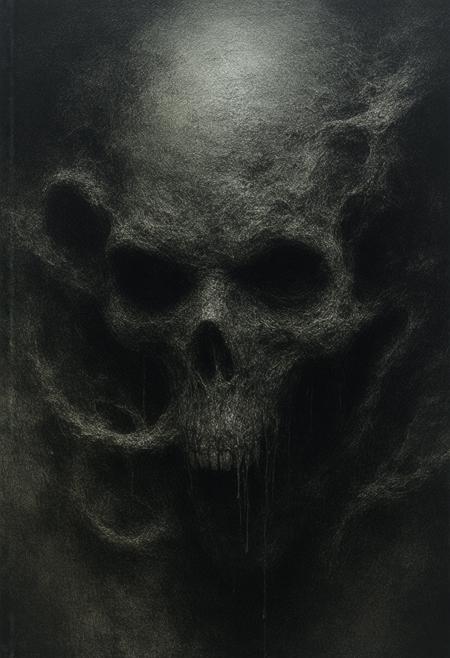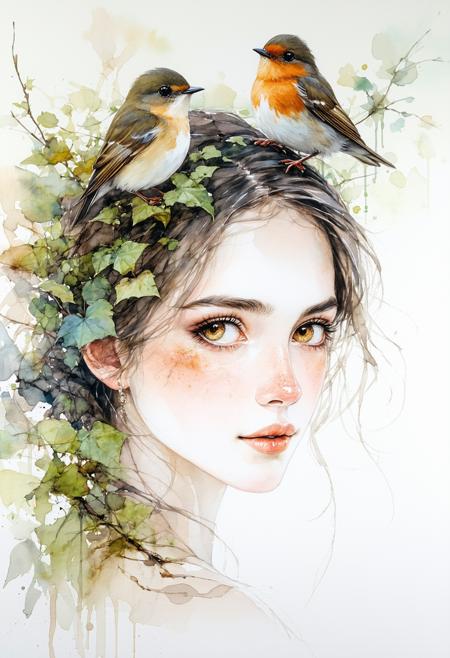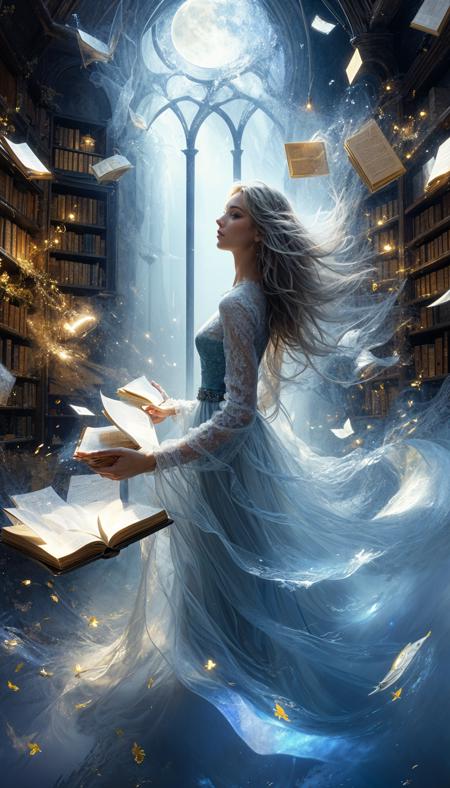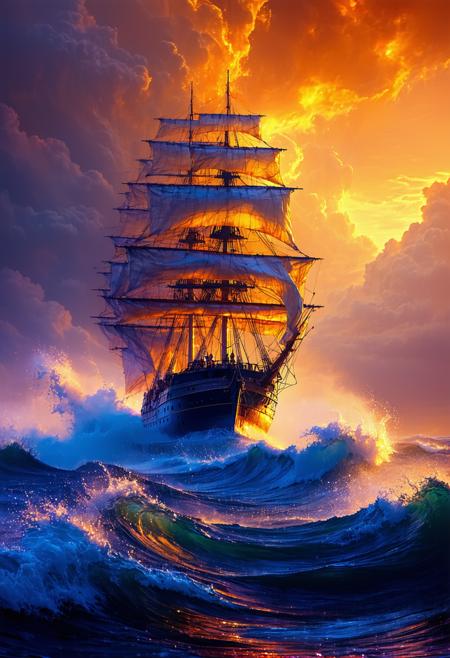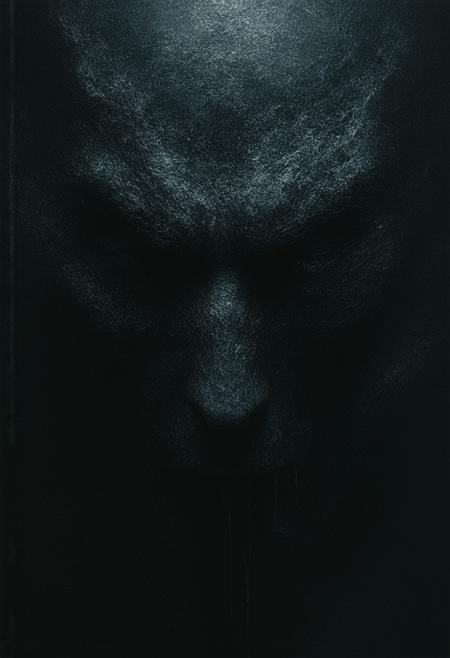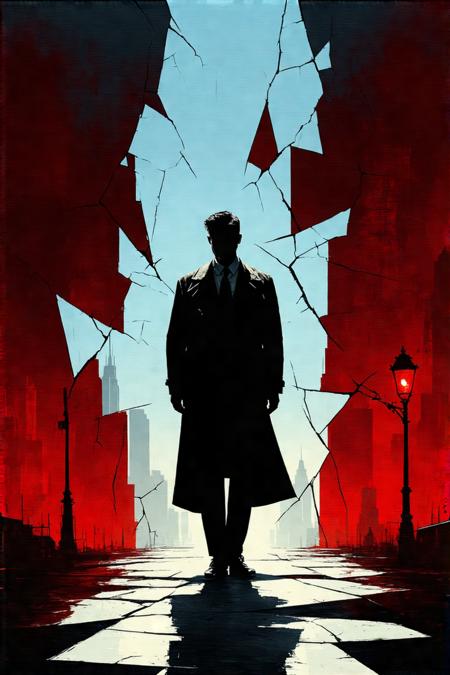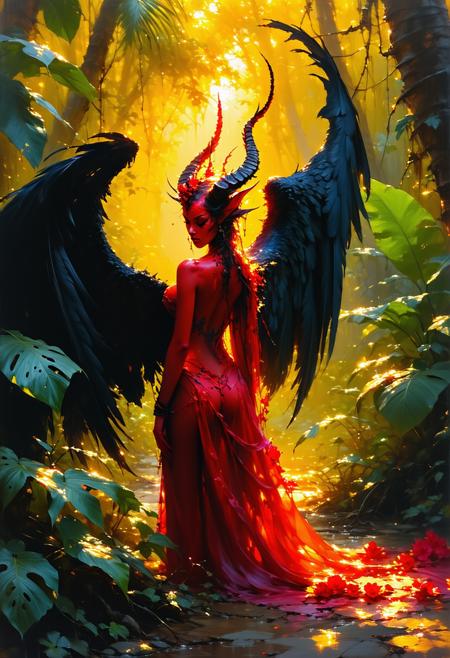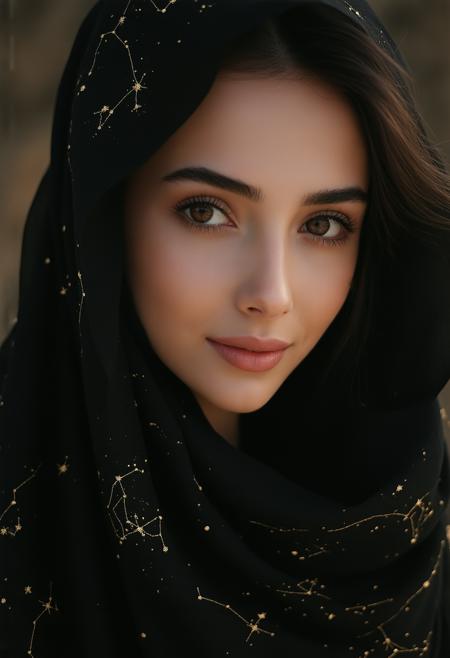A minimalist abstract painting of interlocking geometric forms suspended in harmonious equilibrium, rendered with sharp- edged precision against a gradient void of midnight blue. Bauhaus- influenced composition with radial symmetry, focal converging lines drawing the eye to a glowing core of burnt orange and metallic gold. Textures shift from matte to iridescent, echoing Hilma af Klint’s spiritual abstraction. Tactile gradients mimic liquid mercury meeting velvet. Ambient diffusion creates soft halos around stark shapes, contrasting cool/warm tones. Subtle concentric circles pulse beneath layered translucence, evoking celestial alignment. Palette: oxidized cobalt, saffron, bone white. Style: Zen serenity meets constructivist tension
